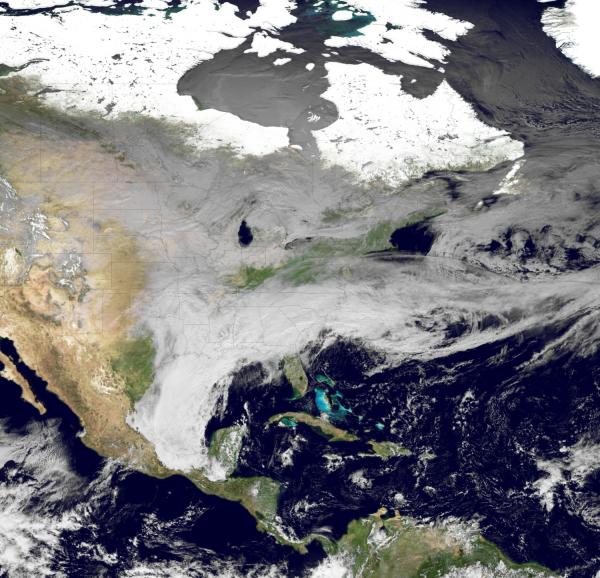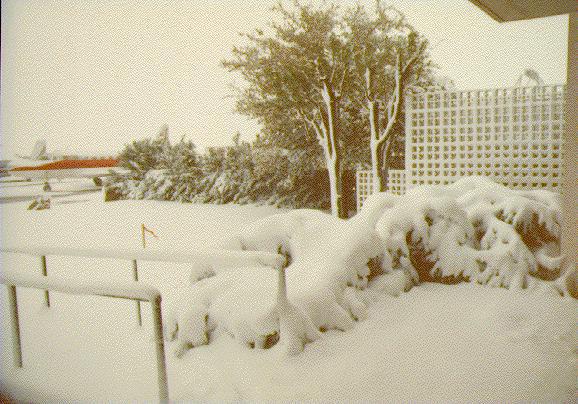
Super Freeze Hits Before Super Bowl

Across Texas, the weather has turned super-cold just in time for the Super Bowl.
The bitter cold sweeping across the Lone Star State follows on the heels of a huge storm that hit earlier in the week . The Dallas-Fort Worth area, which is hosting Super Bowl XLV on Feb. 6, got 6 inches (15 centimeters) of snow overnight, according to the National Weather Service. The winter weather has spread across Texas, and even across the border. Earlier this week, snow fell in Ciudad Juarez, Mexico.
The Mexico snow fell during the massive Groundhog Day storm that has since moved east. As it left, another wave of cold air plunged south from Canada.
"The Arctic air was allowed to come screaming down the plains," said Lance Bucklew, a meteorologist with the National Weather Service in Dallas-Fort Worth.
The weather moves in waves, just like sound or water. The bigger, or higher amplitude, the weather wave, the more cold air will blow south on southerly winds, said Joe Rogash, a meteorologist with the National Weather Service's El Paso office.
In El Paso, just across the U.S. border from Juarez, temperatures were in the single digits Fahrenheit today, with record-breaking negative temperatures earlier in the week. In Dallas this morning, temperatures plummeted into the 20s Fahrenheit (negative single digits in Celsius).
With cold, snowy and icy conditions, schools in both Dallas and Houston were closed today (Feb. 4) and about 120 flights were canceled at the Dallas-Fort Worth International Airport, the Associated Press reported. At Cowboys Stadium, site of the Super Bowl, falling ice injured seven people, one of them critically, the Dallas Morning News reported.
Sign up for the Live Science daily newsletter now
Get the world’s most fascinating discoveries delivered straight to your inbox.
The snowfall in Dallas is only about half as much as its all-time snow record for 24 hours 12.5 inches (32 cm) set in February 2010. On average, the area has about one day per year with snowfall of more than 1 inch (2.54 cm), according to data from the National Weather Service.
El Paso and neighboring Juarez got about 1 to 3 inches (2 to 7 cm) of snow earlier in the week, creating dangerous conditions.
"It was so cold that it didn't melt," Rogash told OurAmazingPlanet. "It formed a layer of ice on the roads." Frozen water pipes and rolling electricity blackouts were also reported.
Snow doesn't fall often in El Paso and surrounding cities, but the recent snowfall was not record-setting. On Dec. 13 and 14, 1987, 22.4 inches (57 cm) fell on El Paso, only about an inch shy of the biggest snowstorm in Chicago . Don't believe it? See the picture below.

- Whopper Winter Storm Can't Compare to '93 Superstorm
- Could This Frigid Winter Be a Record-Brrreaker?
- World's Snow Cover Seen from Space
Reach OurAmazingPlanet staff writer Brett Israel at bisrael@techmedianetwork.com. Follow him on Twitter @btisrael.









